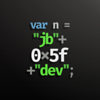The other day i was browsing SourceForge and i came accross a project called Eagle Mode. It is a type of user interface that i have never seen before, called a zoomable user interface (ZUI).
After watching the video on the site i just had to try it. It's amazing! It is a completely different (i won't say new) user experience to the 2D window, icon, menu, pointing device interfaces we are all used to.
Although i do not think that it could ever replace what we have now, it certainly provides new (again, i should say different) ways to browse the file system and interact with widgets.
I can't believe i have never heard of or seen this before. Who else is as excited about it as me? [smile]
ZUI (zoomable user interface)
Looks cool; I might try it later. It's interesting for me because I've had this idea for some time now, and this seems well developed (i.e. not basic).
It's not practical really, or at least the zooming isn't. Say you're looking at one particular folder, it doesn't hold any value to be able to zoom in to see a sub folders contents over just double clicking it. In fact, it takes longer to zoom in that to double click. I suspect if people used that product a lot they would find they'd just expect to double click.
Reminds me of the Jurassic Park file system that girl navigates.
Reminds me of the Jurassic Park file system that girl navigates.
Quote: Original post by Dave
Reminds me of the Jurassic Park file system that girl navigates.
It's a UNIX system! I know this!
Glad I'm not the only person thinking that. [grin]
It looks very slick, and technically impressive but I'm also not sure how practical it would be for day to day use. It could work well in a game though - I'm imagining an Elite style game where your cockpit and it's controls was a ZUI.
[size="1"][[size="1"]TriangularPixels.com[size="1"]] [[size="1"]Rescue Squad[size="1"]] [[size="1"]Snowman Village[size="1"]] [[size="1"]Growth Spurt[size="1"]]
This seems like the kind of interface that could work very nicely on a tablet given appropriate gestures for fast zooming (pinch zooming your way from a piece of a file to the top level would get irritating quickly).
Heh I took an HCI (human computer interaction) class a few years ago and ZUI's were covered along with CLIs and GUIs. :P
Quote: Original post by geo2004
Looks very similar to Seadragon to me:
">Microsoft Seadragon
Yeah, that is a type of ZUI, but it's not nearly as powerful as Eagle Mode. From the video, it looks like Seadragon only has one level of recursion (for lack of a better term). In other words, you can't zoom in recursively on an infinite level of windows/items. You can only zoom in on a single, large window, much like Google Earth or the iPhone's browser.
The thing that amazes me about ZUIs is that the screen space is conceptually infinite. That is, you can make controls smaller and smaller to fit more in yet when you zoom in you get the full detail.
Take for example a window with a splitter bar dividing two panes. Each pane has things like a text edit control and some buttons. In a normal 2D windowed environment, if you slide the splitter to the far left then the left pane will become too small and squashed to see. But in a ZUI, you simply zoom in on that pane and view the controls with ease (although they may still be squished).
You can see what i'm talking about if you look at the test window in the bottom right of the Eagle Mode "cosmos".
[Window Detective] - Windows UI spy utility for programmers
Experience has shown that the more important some UI is, the more fixed and unchanging it needs to be. All industrial controls are coded for fixed resolution and fixed screens, with hard-coded positions and sizes. This is not lack of design, but based on hard-learned lessons.
Web has evolved similarily - there are no divider pans, frames dies out in favor of fixed, vertically laid out pages.
iPhone and iPad demonstrated that single window approach works really well.
Operations uses dashboards, which contain predetermined set of parameters displayed in fixed sizes, so that just a glance indicating upper left corner is yellow alerts someone that something needs attention.
This type of interfaces has limited use in various exploratory applications, but problem with those is how to select and manage areas of interest. Even then, everyone will merely arrive at some optimal layout and eventually stop changing it. At that point zooming becomes a problem. OS/2 would lay out icons dynamically, based on text sizes, while Windows would use grid layout. OS/2 looked somewhat prettier, but was horrible in practice, since there was no visual clue, while with grid layout one makes a mental note (2 left, 3 down).
The best interfaces are those that user doesn't notice. Pages of settings have given way to defaults, carefully selected from metrics. Complex forms are driven by heuristics via single line queries.
Another important factor, perhaps by far the most crucial whenever designing any kind of UI - *never ever* change it. It doesn't matter how broken, or how subtle certain behavior is - once users get accustomed to it, they'll refuse to change. Many projects have failed or fallen out of favor simply because UI was genuinely improved.
Fixed and predictable - that is key to good UI, no matter how boring it sounds. Individual customization, while useful in certain applications, almost inevitably turns out to be counter-productive, even if revolutionary. Sometimes it's just hard to pinpoint which UI elements must be fixed.
Web has evolved similarily - there are no divider pans, frames dies out in favor of fixed, vertically laid out pages.
iPhone and iPad demonstrated that single window approach works really well.
Operations uses dashboards, which contain predetermined set of parameters displayed in fixed sizes, so that just a glance indicating upper left corner is yellow alerts someone that something needs attention.
This type of interfaces has limited use in various exploratory applications, but problem with those is how to select and manage areas of interest. Even then, everyone will merely arrive at some optimal layout and eventually stop changing it. At that point zooming becomes a problem. OS/2 would lay out icons dynamically, based on text sizes, while Windows would use grid layout. OS/2 looked somewhat prettier, but was horrible in practice, since there was no visual clue, while with grid layout one makes a mental note (2 left, 3 down).
The best interfaces are those that user doesn't notice. Pages of settings have given way to defaults, carefully selected from metrics. Complex forms are driven by heuristics via single line queries.
Another important factor, perhaps by far the most crucial whenever designing any kind of UI - *never ever* change it. It doesn't matter how broken, or how subtle certain behavior is - once users get accustomed to it, they'll refuse to change. Many projects have failed or fallen out of favor simply because UI was genuinely improved.
Fixed and predictable - that is key to good UI, no matter how boring it sounds. Individual customization, while useful in certain applications, almost inevitably turns out to be counter-productive, even if revolutionary. Sometimes it's just hard to pinpoint which UI elements must be fixed.
Quote:
Operations uses dashboards, which contain predetermined set of parameters displayed in fixed sizes, so that just a glance indicating upper left corner is yellow alerts someone that something needs attention.
This type of interfaces has limited use in various exploratory applications, but problem with those is how to select and manage areas of interest. Even then, everyone will merely arrive at some optimal layout and eventually stop changing it. At that point zooming becomes a problem. OS/2 would lay out icons dynamically, based on text sizes, while Windows would use grid layout. OS/2 looked somewhat prettier, but was horrible in practice, since there was no visual clue, while with grid layout one makes a mental note (2 left, 3 down).
<rant>
And that is exactly why i hate Windows 7's "feature" of forcing sorting in Explorer's file view. In tiles or grid view, i used to visually locate a file based on it's x,y position (roughly). But now M$ decides that everyone would be better off having their files sorted alphabetically so that when i add a new file it moves all the others around and i lose where everything is
</rant>
[Window Detective] - Windows UI spy utility for programmers
This topic is closed to new replies.
Advertisement
Popular Topics
Advertisement







